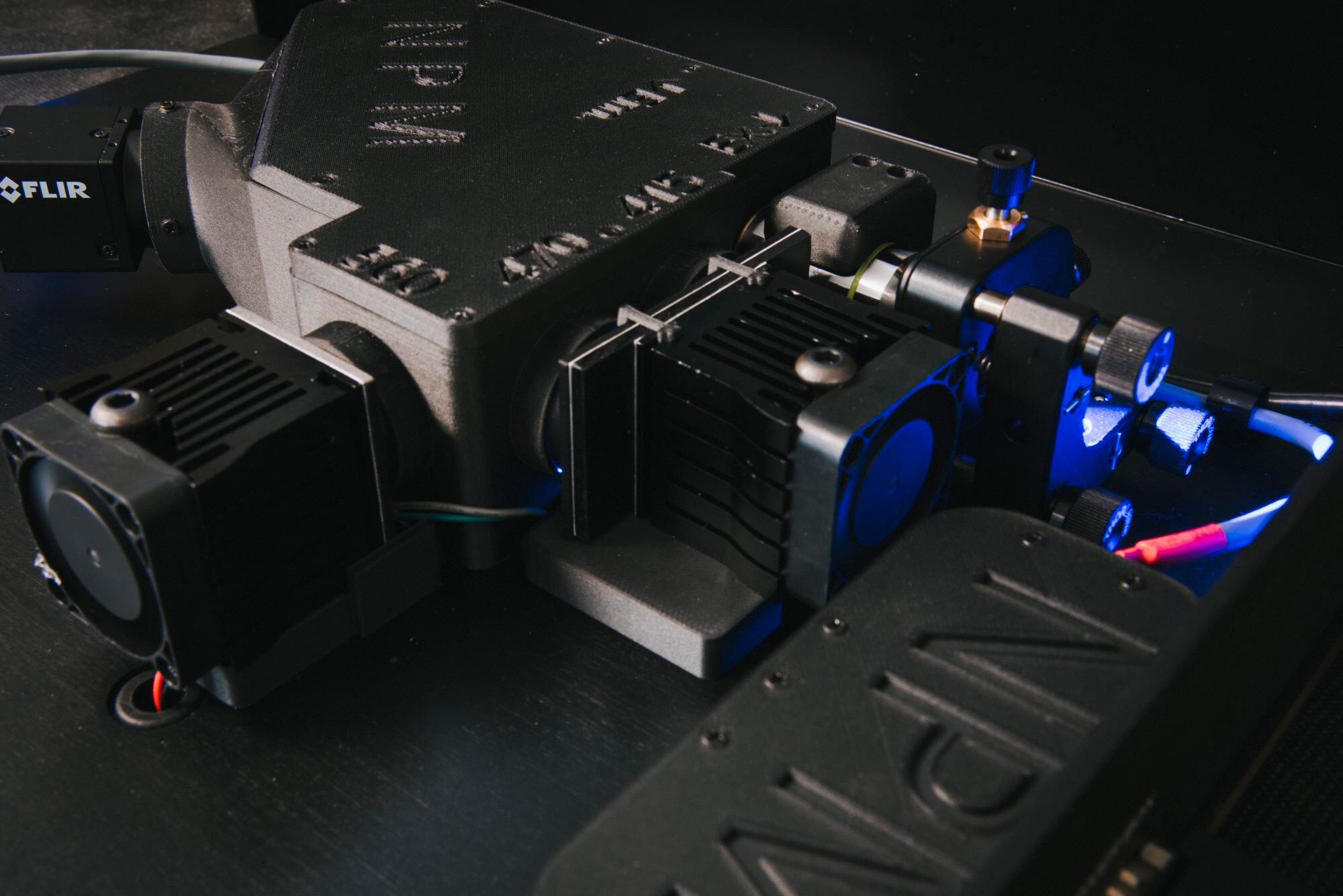
Patch Cord Purchasing Guidelines
Prior to conducting your first fiber photometry experiment, you are going to need a patch cord. We make 4-branch, .37 NA, 200 um core diameter, 1.25 mm ferrule diameter patch cords that are suitable for most experiments. If you would like a custom patch cord, we recommend ordering from Doric. We provide guidance below on required specifications and compatibility.
The most important thing when choosing a patch cord is ensuring you have the correct numerical aperture (NA). Neurophotometrics systems come with an objective that has a 0.37 NA. To maximize your signal, the patch cord and fiber optic cannulae should match this NA. Matching the NA will ensure that there is no light loss from the excitation or emission side. Having mismatched NAs at any of these points will cause significant light loss, giving you less than optimal signal — or none at all!
Next, you must choose the ferrule and core diameters of the patch cord. These can vary between experiments, but must match specifications of the fiber optic cannula(e) that you will implant into the animal. The most common ferrule diameter is 1.25 mm, though some groups prefer 2.5 mm. Keep in mind that the smaller the ferrule, the closer together you can implant multiple fibers.
Common core diameters are 200 um and 400 um. We recommend 200 um, as smaller fibers cause less tissue damage upon implant. For sparse populations, 400 um patch cords and implants can increase the chances of picking up a signal, though for most experiments they are not necessary. The maximum number of ROIs you can record from depends on the core diameter of your patch cord- 8 ROIs with 200 um diameter, and 4 ROIs with 400 um diameter.
The most popular combination is 1.25 mm ferrule diameter with a 200 um core diameter. You can pick any combination to fit your experiment — just be sure that the patch cord matches the fibers.
Another consideration for your patch cord is the connection to the system. FP3002 systems come with adapters for both SMA and FCM connectors. FP3001 systems only have adapters for FCM connectors, though SMA adapters can be purchased from Thor Labs.
The patch cord also must connect to the animal subject, so you will need to specify this type of connection as well. This connection type should be MF, followed by the size of your ferrule. For example, if you are using fiber optic cannulae with 1.25mm ferrules, the connection would be “MF1.25.”
Patch cords come in a variety of lengths. We recommend a length of 2-3 meters, even if this is longer than what is needed for your behavioral setup. The longer the patch cord, the more twists it can absorb before the signal starts to attenuate. However, a longer patch cord will also lower your efficiency, as you will lose signal as a function of distance. We do not recommend patch cords longer than 3 meters.
Patch cords can also have several branches. The number of branches you choose is completely up to you and dependent on your experimental needs. How many animals and/or brain regions you wish to record from at once will influence this choice. We recommend starting with at least two branches, even if you are only recording from one brain region to start. You can simply cover up one the unused core with tape during the experiment. The maximum number of branches that will fit in the field of view is 8 for 200 um patch cords, and 4 for 400 um patch cords.
Once you’ve determined what kind of patch cord you need, we recommend buying that patch cord from Doric Lenses. Please note, however, that they can have quite long lead times; you’ll want to place your order at least 6 weeks before you plan to do any experiments.
Example order for a 2-branch patch cord, 3m long, 1.25mm ferrule diameter, 200um core, 0.37 NA.
Here at Neurophotometrics, we use the Branching Fiber-optic Bundle Design patch cords (1.25mm/200um/0.37NA). On the left you can see an example of how to specify what qualities you want in your patch cord when ordering from Doric. In this example, I have chosen a 2 branch, 3 meter long patch cord.
Some labs that are just beginning to do fiber photometry might already have patch cords. A common question we receive is whether or not these pre-existing patch cords will work for fiber photometry experiments, even if the NA, ferrule size, and/or core diameter don’t perfectly match their new system or fiber optic implants. We highly recommend that you purchase a patch cord that will perfectly match up with the system. There will be a significant amount of emission loss when these qualities are mis-matched, resulting in a diminished signal. Patch cords with higher or lower NAs can be used for testing and getting comfortable with recording, but ideally would not be used for experiments. It is always a good idea to double check the specs of your patch cord before recording, especially if you have multiple patch cords.
Example order for a pigtail commutator.
If you are performing experiments that require long recording periods, it is tempting to purchase a rotary joint or commutator as well. However, most rotary joints that are used for optogenetics are not optimized for fiber photometry. They can cause a loss of light at the connection point of the rotary joint and patch cord. We recommend that you start recording without one, and add one only if necessary. If you decide that you need a rotary joint, Doric makes a pigtail commutator that is compatible with fiber photometry.
This second example order is for a pigtail commutator. It will also need to have an NA of 0.37 and match the ferrule and core diameters of your fibers.


